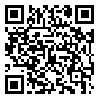BibTeX | RIS | EndNote | Medlars | ProCite | Reference Manager | RefWorks
Send citation to:
URL: http://jdisabilstud.org/article-1-449-en.html
2- School of Rehabilitation Sciences, Iran University of Medical Sciences
Objectives: The world Health Organization considered participation as an important role in normal aging .Participation is one of the main concepts of International Classification of Functioning, Disability and Health (ICF). Activity is defined as "the execution of a task or action by an individual" while participation is "the involvement in life situations". Activity Card Sort (ACS) is a comprehensive tool to assess participation in instrumental, leisure and social activities. The main version of ACS includes 80 pictures each representing activities done by the American elderly .being a vital part in human's health and development, participation has become a principal concept in field of occupational therapy. Through participation, humans acquire skills and competency, through which they can communicate with others and with their surroundings in order to achieve their purpose and to give sense to their lives .Occupational therapy focuses on enabling individuals and groups to participate in everyday tasks that are meaningful while engaging them in everyday life with others. The purpose of this study is to investigate the cultural adaptation, validity and reliability of Persian version of ACS according to cultural criteria of Iranian elderly population.
Materials & Methods: This descriptive-analytic study was conducted in Tehran using available sampling method. Having acquired the permission of test developer, for item generation process, in the first and second phase, 10 elders through diurnal timing schedule and, 40 elders by activity questionnaire were interviewed respectively. In item selection process, 40 elders participated in Delphi survey in 2 rounds to identify common items in Iranian elders. Finally, two panels consisting of elders and experts reviewed all the items. In The third stage, then, test reliability and test-retest were examined using internal consistency.
Results: In item generation process for first phase, 3 items were added to previous comprehensive list of activities and in second phase, 130 activities selected and frequency of each activity was defined. In Delphi survey, items above cut point were selected and finally, after two reviews by elders and experts 86 activities were included in Iranian ACS. Cronbach's alpha values for the Persian ACS was 0.84,for instrumental activities 0.73 ,for low physical demand activities 0.80 ,for high physical demand activities 0.71 and for social activities 0.70,indicating high internal consistency of the instrument. The test-retest correlation was 0.98.
Conclusion: cultural adaptation was done in every country with different methods. In present study, all existing and applicable methods with respect to time and geographic limits were carried out in order to collect the best and clearest elder’s activities collection, which reflect appropriate Iranian culture .In current study, Item generation and selection process were combination of methods used in Australian and Hong Kong studies. In order to define the area of activities, one expert panel divided activities into Instrumental (31 activities), low demand leisure (24 activities), high demand leisure (11 activities), and social (20 activities).The results of this study indicate that Iranian ACS has good validity and reliability. The number of Iranian ACS activities (86) is similar to American (89) and Arab version (88) and close to Australian version (82), but it is different from Hong Kong version (65). This tool allows professionals to accurately assess the elderly participation rate.
| Rights and permissions | |
 |
This work is licensed under a Creative Commons Attribution-NonCommercial 4.0 International License. |




